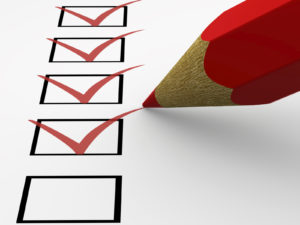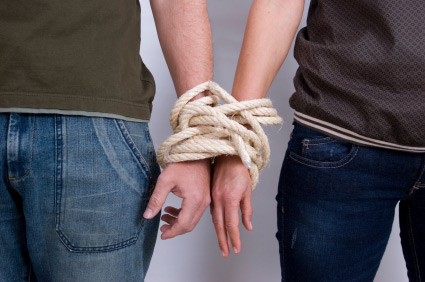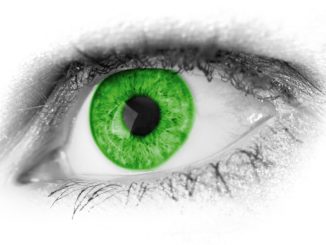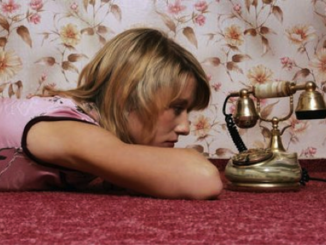Codependency and Relationships
Codependency is a term we often hear but what does it really mean? Is there a way to look at patterns in your relationships to assess if codependency exists? If there are codependent elements at play, what can you do to create positive change?
According to research published in the Journal of Clinical Psychology, there are indeed a group of specific behaviors that may help you to answers these questions. At the Couples Counseling Center in Chicago, we have developed a codependency checklist for you to review that may help to provide greater insight.
Before you download the checklist, it might be a good idea to know what exactly codependency means. This information can help contextualize your analysis so that you can arrive at a place of deeper understanding.
Are you ready? Let’s jump right in?
1. Codependency and Irresponsibility
In codependent relationships, one or both parties may empower another’s irresponsible behaviors by not holding them accountable for their actions or inactions. Here are a few examples:
- Making up excuses for not handling money responsibly
- Offering to pay bills of a partner who continually wastes money
- Continually cleaning up after someone who is able to do on their own
- Excusing selfish and narcissistic behaviors
- Excusing abusive, toxic and destructive behaviors
2. Codependency and Learned Helplessness
For people who are codependent, they often buy into their significant other’s continual engagement in learned helplessness. When you hear the phrase learned helplessness, think of an individual who continually says, “I can’t”. Learned helplessness means that a person has bought into a self-authored narrative that says they do not have the power to create change in their life. “I’ve always been this way – I can’t change”
Here are a few examples of how learned helplessness works in codependent relationships.
- Buying into self-defeating behaviors of the other person
- Empowering learned helplessness by “picking up the slack”
- Reinforcing the other person’s “I can’t” statements by doing it for them
3. Codependency and Addiction
Addiction and codependency in many ways go hand in hand. If you are codependent, you were likely drawn to the person you are attached to for a number of reasons, including a desire to “fix” them or “save” them from themselves. In most all cases, the person with an active addiction is emotionally unavailable, which sets up a cruel cycle of pain for the codependent.
Here are a few examples of how codependency plays out in relationships where addiction is involved.
- Denial that an addiction of a given substance (i.e. alcohol) is taking place
- Making excuses for addictive behavior
- Adopting familiar roles from childhood if a parent was an addict (i.e. peacemaker)
4. Codependency and Underachievement
Folks who are codependent often connect with people who are underachievers. This happens because the codependent has a strong desire to fix or somehow better the person they are involved with. In time however, the relationship morphs into a dynamic where the previous characteristic of learned helplessness comes into play.
Here are some examples of what codependency and underachievement look like.
- Empowering underachieving behaviors by attending to tasks that the other party is capable of doing on their own.
- Keeping another person emotionally or financially (or both) dependent on you.
- Remaining emotionally or financially dependent on the person (this involves mutual codependency).
5. Codependency and Poor Self-Care
Codependency is dysfunctional because it empowers the dis-empowerment of another. This is particularly true in the area of self-care. Typically, codependents will go out of their way to care for the person they are involved with – and neglect their own self-care.
Examples of what codependency in the area of poor self-care can include:
- Continually attending to house chores the other person is capable of doing.
- Buying their groceries and making their meals; not letting them do it on their own.
- Washing, bathing or otherwise grooming the other person even though they are able to do most if not all of these activities.

Codependency Checklist
Below you will find out codependency checklist. Bear in mind that the checklist provided here does not represent the entire universe of codependent behaviors. Instead, it should be thought of as a kind of guide to help you think more deeply about your relational patterns and attachment styles.
-> Codependency Checklist: Am I Codependent? <-
Resources for Codependency
If you believe you are codependent, one the best ways to create positive change is to become better educated on why you are codependent and more important, what you can do stop the cycle of behaviors discussed here.

We have included some links to support groups in the previously mentioned checklist for those who identify as co-dependents. Partaking in group processes, like codependents anonymous can help you work through your dysfunctional relational patterns in a way that can only be accomplished through the meaningful support of others.
Finally, taking place in counseling for codependency can help you to better identify codependent patterns and actively make change for the here and now and the future! Should you decide to employ the help of a therapist, it will be important that you be completely honest about what has been happening in your relationship. Your counselor will not judge you and everything you say is confidential.
We hope you found the material and resources presented here useful. Please be sure to watch the codependency video we have included below and if you have time, take part in our codependency poll.
Thanks for visiting the Couples Counseling Center. Be sure to Like Us on Facebook or Circle Us on Google+ !





